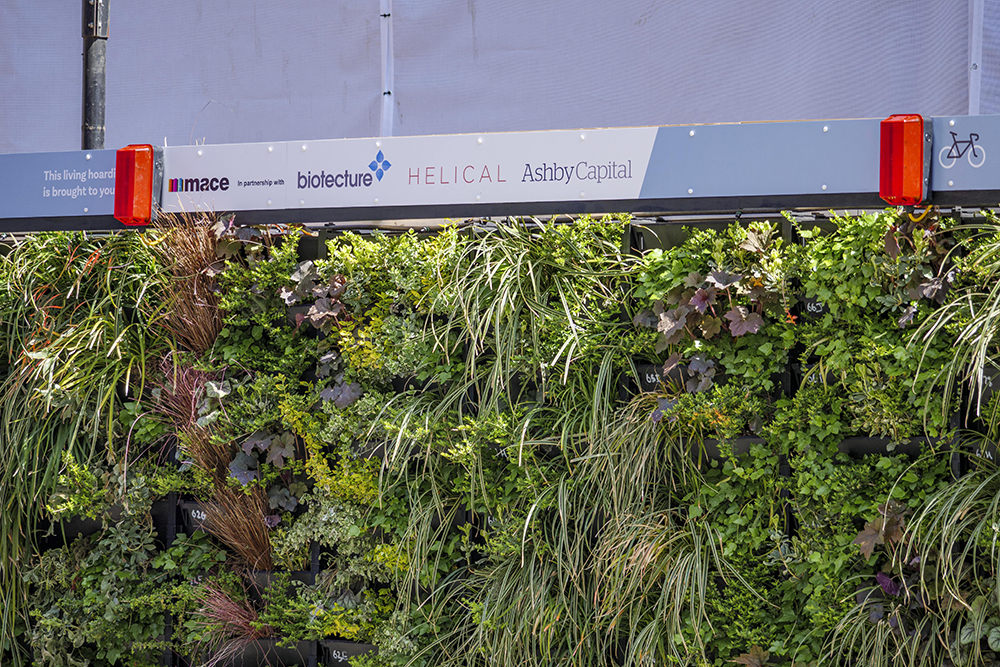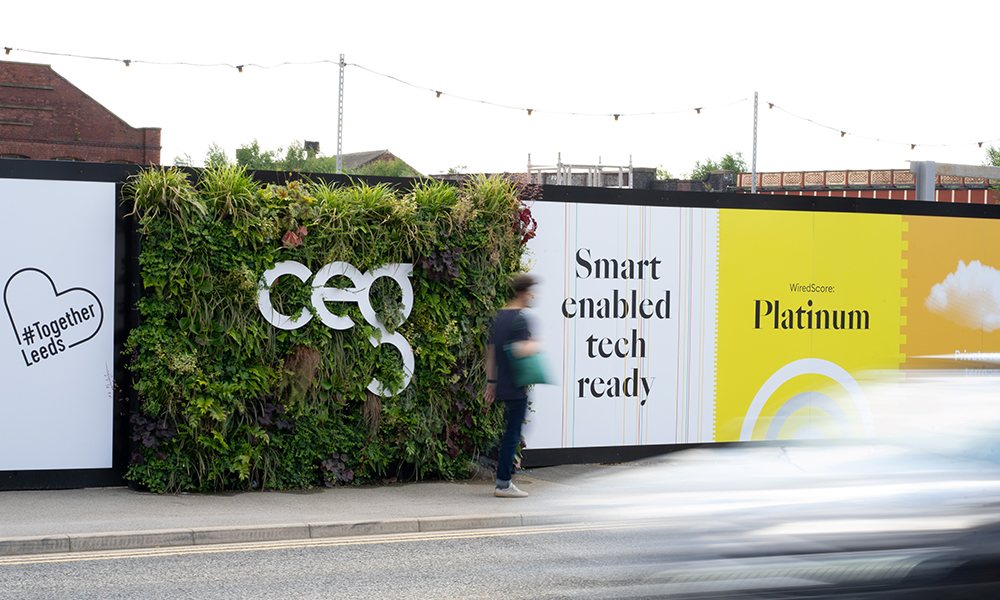
Richard Sabin discusses how living hoardings can enhance a building project and contribute to greener cities and urban areas.
Construction sites are not often welcome additions to cities or urban areas. The majority of local residents look forward to the finished building rather than the construction phase.
In the past, construction hoardings have been used as advertising mediums to get across the aspirations of the new development or the branding of a developer or main contractor, in addition to their primary purpose of separating the public from building works and the potential hazards therein.
Now, with increasing pressure on developers to “green” cities and urban areas, living hoardings are rising in popularity for their benefits in improving appearance and helping developers achieve environmental targets.
What is a living hoarding?
Simply put, a living hoarding is a temporary wall made up of mature plants that surround the construction site.
PlantBox is a modular stackable living wall system that places no structural load on the hoardings, using restraint fixings only. The living hoarding can be quickly erected, dismantled and reinstalled at a future site, or deployed on the completed project, for example, around an outside café area. This ability to repurpose is a useful feature for those contractors looking to demonstrate their ‘responsible construction’ credentials.

“Site teams tend to like working alongside living hoardings as they create an instant relaxing green space for contractors and staff to unwind.”
Often when traditional hoarding is erected it can create resistance among local residents or businesses who may be worried about it being unsightly, while having concerns about air pollution and noise caused by the construction work itself. If a living hoarding is chosen for the site perimeter it actually helps to create good relationships with the local community from the start.
Reducing pollution and noise
Alongside their aesthetic appeal, which greatly enhances their surroundings, living hoardings can reduce air pollution and noise.
They do this by acting as a dust barrier and absorbing potentially harmful pollutants such as particulate matter. The Department for Environment, Food & Rural Affairs found that, in terms of particulate matter (PM), the implementation of a planting scheme within an urban area resulted in concentration reductions in the range of 2% to 10%.
In addition, the dense planting helps to muffle noise from construction sites, so they cause less disturbance.
Biodiversity is something that many community groups, residents and local authorities are concerned about and a living hoarding actually improves biodiversity, encouraging bees, insects and birds to the hoardings and becoming an attractive feature in their own right in an urban setting.
Health and well-being on site
Site teams tend to like working alongside living hoardings as they create an instant relaxing green space for contractors and staff to unwind. Green spaces can reduce stress and boost productivity so this can be a positive generally for personnel on site.
A modular system like PlantBox is easy to assemble, uninstall and move from site to site. Its flexibility means it can be fixed to site accommodation and welfare units. It is also low maintenance and only needs the occasional top up of water to flourish.
With calls for the government’s new Planning Bill to align directly with the UK’s net zero target and ambitions for nature set out in the Environment Bill, there is a real need for nature to be incorporated into new developments, wherever possible.
Developers may find that specifying a living hoarding can help them achieve environmental targets by reducing air pollution and the overall build’s carbon footprint. It can also help strengthen planning applications, particularly in urban areas, demonstrating to planners that the whole project from start to finish will have green credentials.
More construction managers are looking for ways to tackle resident and business concerns about the impact of local building works. When green hoardings are chosen it clearly demonstrates consideration to the community, which is important on many of today’s urban construction projects.
Richard Sabin is managing director of green infrastructure specialist Biotecture.











